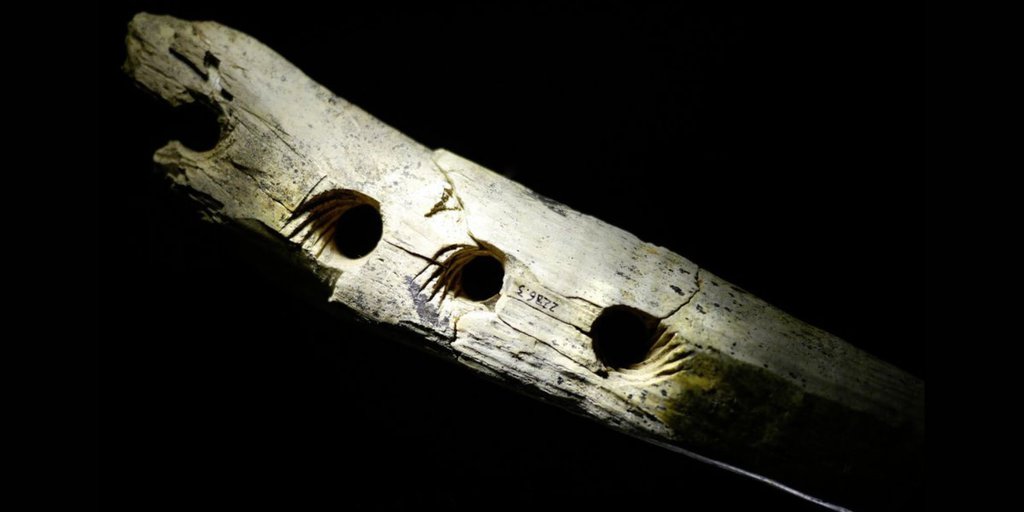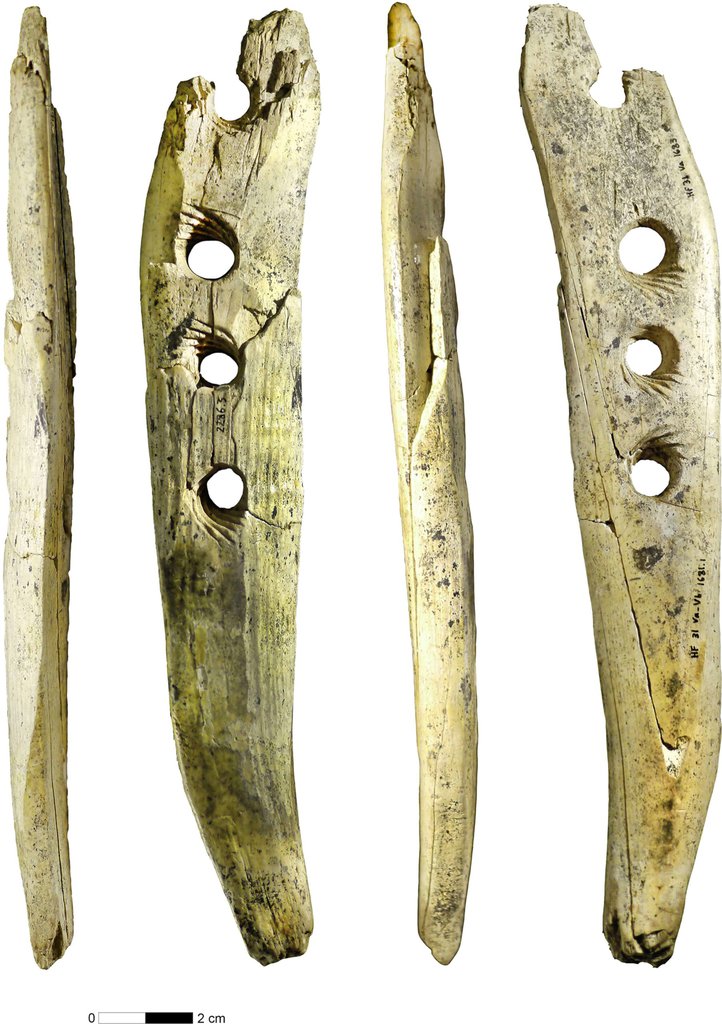
In a fascinating revelation, scientists confirm that a woolly mammoth tusk, dating back approximately 35,000 years, served as a tool for rope-making among early humans. Previously believed to be a symbolic or artistic artifact, the ivory’s utilitarian purpose has now been affirmed through experiments conducted with a replica of the ancient find.
Unveiling Ancient Secrets
Published in Science Advances, the study dismisses notions of the ivory baton being a mere piece of art, highlighting its functional significance. Researchers successfully crafted a robust rope from cattail reeds using a recreated version of the artifact, challenging previous assumptions.
Unearthed in 2015 at the Hohle Fels cave in southwestern Germany, the mammoth ivory, now known as the ‘Hohle Fels baton,’ was initially perceived as a potential ritualistic or ceremonial object. However, meticulous analysis of its grooves and holes led to the discovery of residue and wear patterns, indicating its role as a tool for rope or twine production.
Decoding the Stone Age
The ivory’s strategic design, intentional grooves, and traces of plant and soil residue provide compelling evidence of its practical function.

Stone Age humans likely utilized such tools for crafting strong ropes essential for various purposes, including tool-making, shelter construction, item transportation, domesticating dogs, and kindling fires.
Reviving Ancient Craft
While Stone Age ropes, typically made from plant materials, have disintegrated over time, the Hohle Fels baton offers a rare glimpse into ancient ingenuity. The recent experiment involved crafting replicas of the ivory using materials available around 30,000 years ago, such as deer sinew, flax, hemp, linden, willow, and nettles. Cattail reeds emerged as the most effective choice, allowing the team to create a five-meter-long, durable rope in ten minutes.
While the study doesn’t conclusively assert the ivory’s exclusive use for rope-making, it represents a groundbreaking step in documenting artifacts likely employed for such purposes. This research sheds light on the resourcefulness of early humans, offering a vivid connection to their innovative practices more than three millennia ago.
Signs That a Relationship Is Going to Last According to Psychologists
According to clinical psychologists, there are four major signs that any given relationship is going to last. One couples therapist, Dr. Kathy Nickerson, has even given her own advice to her followers on social media.
Dr. Kathy Nickerson Explains the Potential of a Relationship

According to Nickerson, the first sign that a relationship has a good chance to last is when it feels easy to be in one. She clarified that what easy meant, in this case, was that there would be no struggle and not tons of drama. She further explained that a relationship that doesn’t feel super complicated and hard most of the time is what she would consider easy because while everybody would have their own struggles, the relationship would still be easy.
Love Really Is Everything in a Relationship

The second sign that a relationship is going well, apparently, is when the couple is fair, the two are reasonable when they fight, and they remain focused on communication and not attacking each other. The number three sign that Nickerson talked about was when two partners care about each other’s happiness and support each other in their endeavors. The couple’s therapist said that the fourth sign was when the people in the couple are intentionally gentle and kind to each other. She concluded that people really needed to be kind and gentle with those they love the most. Apparently, there was also a fifth sign that a couple would make it, and that was for those who would support their partner when doing things like wearing a ridiculous straw hat.
A Relationship Can Also Be Doomed
Other clinical psychologists have focused their efforts on pointing out red flags when it comes to doomed relationships. According to one study previous infidelity was a risk factor for further infidelity. That technically backed up the old saying – once a cheater, always a cheater. The study was done over a five-year period and pointed out how people who cheated in their first relationship were three times more likely to cheat on future partners compared to people who stayed faithful to their first partner.

That study also showed another interesting statistic. It pointed out how people who suspected their first partner of cheating were also four times more likely to have those same suspicions about their next partner. The study was even titled: “Once a Cheater, Always a Cheater? Serial Infidelity Across Subsequent Relationships.” It showed that previous cheating could be considered an important risk factor for infidelity when it comes to the next relationship. So, if someone had cheated before, the chance they’ll do it again is much higher than it would otherwise be.